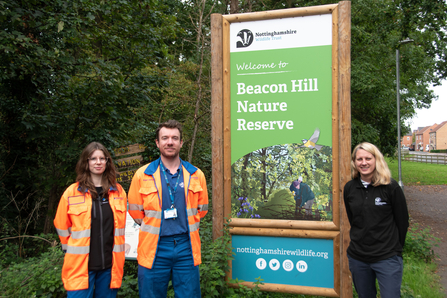Beacon Hill Conservation Park, located near Newark is one the Nottinghamshire Wildlife Trust’s 43 nature reserves across Nottinghamshire and was donated to the Trust in 2001 by British Gypsum (now part of Saint-Gobain) - a long-standing business supporter of the Trust.
This year welcomes 20 years of the park being open to the public to enjoy and thanks to Saint-Gobain’s generous funding we have celebrated this by installing a new Welcome sign at the park on Beacon Hill Road.
Over the years Saint-Gobain companies British Gypsum and Formula (which operates the Newark quarry and factory sites) have helped with maintaining the reserve through employee volunteering and donating new benches for the public to use.
Adam Garbutt, Mine Technical Engineer at Saint-Gobain Formula’s Bantycock Quarry near Newark said: “Saint-Gobain has enjoyed a positive working partnership with Nottinghamshire Wildlife Trust for many years and it is a pleasure to celebrate this Beacon Hill anniversary in such a practical way. We hope many people continue to come and enjoy this haven for nature in Nottinghamshire.”
Welcoming the continued support of Saint-Gobain Formula, Wayne Ball, the Trust’s Head of Nature Recovery (South) said: “Beacon Hill Park is a great place for wildlife and local people and 20 years on from it first being open to the public, the new sign supported by Saint-Gobain will mean more people will be aware that it is open as a place for people to connect with nature on their doorstep.”

